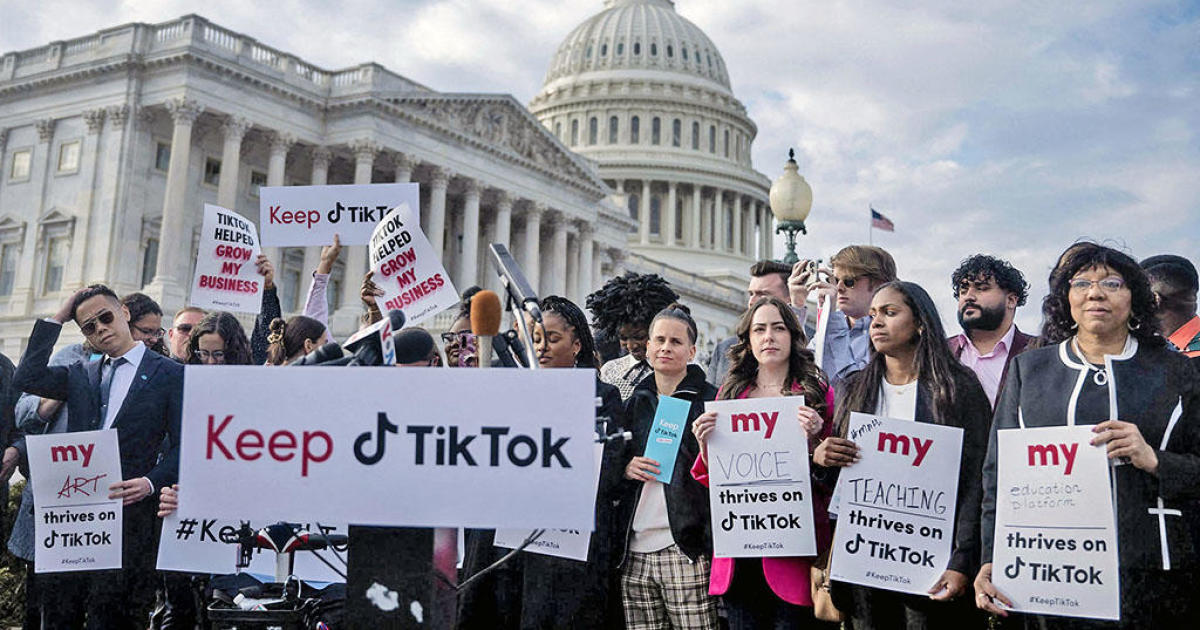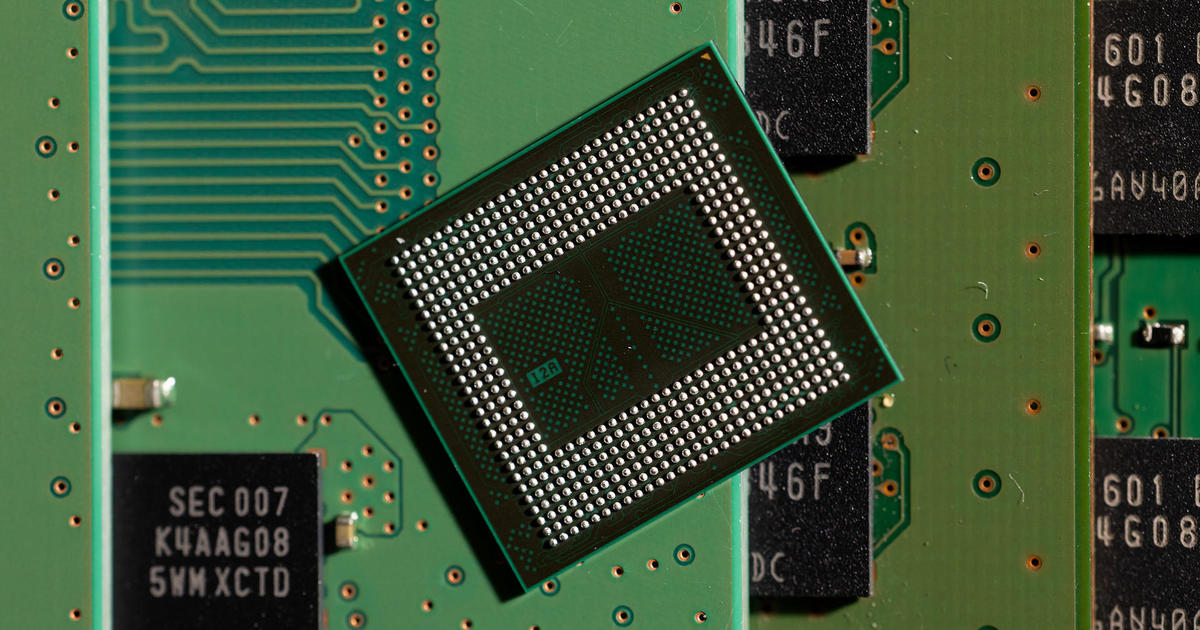U.S. Navy Sailors Sue Japan Power Co. For Radiation Exposure During 2011 Quake, Tsunami Rescue
SAN FRANCISCO (KPIX) -- Rare cancers, blindness, birth defects and now, two deaths.
Hundreds of U.S. sailors who took part in rescue efforts following Japan's earthquake and tsunami say they were exposed to dangerous levels of radiation. Now a federal judge has ruled their class-action lawsuit against the Tokyo Electric Power Company can go forward.
It has been more than three years since U.S. Navy Lt. Steve Simmons' ship, the USS Reagan, got the call to help survivors of a 9.0 earthquake and subsequent tsunami in Japan. Within hours there was more bad news: the quake had triggered a meltdown at the Fukushima Daiichi nuclear power plant.
Sailors were ordered to scrub decks, stop drinking ship water and seal the ventilation system when the ship sailed into the nuclear plume.
"We sat in this plume for over 5 hours," said Simmons.
All the while his commanders insisted there was no danger.
"I'll be honest, I hit the 'I believe' button," he said.
But within months, Simmons, once an avid hiker, began feeling weak and sick with uncontrolled fevers and severe night sweats. Soon he was in a wheelchair, unable to walk. He says military doctors would never tell him what was wrong.
"Every one of them wanted to discredit radiation as a possible cause," Simmons said.
In a final report to Congress the Department of Defense found radiation doses were less than the exposure a person would receive during an airplane flight from Los Angeles to Tokyo.
"It may not be taking in evidence that the doses that were assumed to be on board the USS Reagan may have been under-reported," said Dr. Robert Gould, a former Kaiser pathologist who is president of Physicians for Social Responsibility.
He points to transcripts of phone calls that recently came to light in which a Navy administrator on board the USS Reagan at the time of the disaster says radiation doses were "about 30 times what you would detect on a normal air sample" -- much higher than the DoD estimates.
"Given that there is more information that has come out, I think you would have to re-look at the entire situation," said Dr. Gould.
That hasn't happened yet but hundreds of sailors, including Simmons, aren't waiting. They have filed a billion-dollar lawsuit against Tokyo Electric Power Company, the Japanese utility that ran the Fukushima nuclear power plant.
"These young sailors have come down with leukemia, ulcers, testicular cancers, brain cancers, very rare cancers," said their attorney Charles Bonner. He's representing 200 soldiers and their families.
Under federal law he can't sue the U.S. government, but says the case is clear against TEPCO. "They didn't have emergency standby vehicles, they didn't have batteries to pump water into these reactors which at the time were melting down. This was totally inadequate," Bonner said.
After 16 years of service, Lt. Simmons was able to retire this year with full benefits. He hopes the lawsuit will help younger sailors who have had to retire with no pension or medical coverage.
"One of the things they always taught throughout my naval career is 'sailors first last and always,' you always take care of your sailors no matter what. And we are not doing that right now."
The sailors have set up a website (still under construction) at: www.fukushimaradiationvictims.com
TEPCO STATEMENT:
We are thankful to the United States for coming to the aid of the people of Japan, and appreciate the service of all the men and women of the United States military who provided the Japanese people with humanitarian and disaster relief in Operation Tomodachi.
We would refer you to the report submitted in June of this year by the Department of Defense to the Congressional Defense Committees*. In that report you will find a description of the steps taken by the US military to limit the exposure of its service members, including the use of the Reagan's sophisticated radiation detection equipment to monitor radiation levels.
The Navy and Department of Defense also have assessed the level of radiation exposure of US service members, not only those on the Reagan but all those on or near the mainland of Japan. Radiation doses were calculated for more than 75,000 DoD-affiliated individuals.(P.2 of the report) The radiation dose estimates were peer reviewed by the National Council on Radiation Protection and Measurements (NCRP), a non-governmental panel of radiation health experts, which "concurred with the scientific methods used to develop the dose estimates."
The report concludes that "[t]here is no objective evidence that the RONALD REAGAN sailors experienced radiation exposures during [Operation Tomodachi] that would result in an increase in the expected number of radiogenic diseases over time."(P.5 of the report) The report further states that "it is implausible that these low-level doses are the cause of the health effects reported by the RONALD REAGAN sailors."(P.3 of the report). We are responding to the claims that have been made in this lawsuit in accordance with the judicial procedures of the United States.
NAVY RESPONSE:
Immediately following Operation Tomodachi, the Department of Defense established the tri-service Dose Assessment and Registry Working Group (DARWG) to study available data and develop estimates of radiation exposure received by U.S. personnel in and around the main island of Japan during Operation Tomodachi. The DARWG estimated radiation exposures for approximately 75,000 U.S. personnel on ships or at shore facilities on the main island of Japan during Operation Tomodachi.
The DARWG's report on radiation exposure received by Fleet-based individuals, which was peer reviewed by a non-governmental council of subject matter experts, determined that the highest whole body dose to any U.S. fleet-based personnel during Operation Tomodachi is much lower than levels of radiation exposure associated with the occurrence of short or long-term health effects. For perspective, the worst-case radiation exposure for any U.S. fleet-based personnel during Operation Tomodachi is less than 25% of the average annual radiation exposure to a member of the U.S. public from natural sources of background radiation, such as the sun, rocks, and soil.
The DARWG's report on radiation exposure received by shore-based individuals, which was peer reviewed by a non-governmental council of subject matter experts, determined that the highest whole body dose to any U.S. shore-based personnel during Operation Tomodachi is much lower than levels of radiation exposure associated with the occurrence of short or long-term health effects. For perspective, the worst-case radiation exposure for any U.S. shore-based personnel during Operation Tomodachi is less than half of the dose an average member of the U.S. population typically receives annually from natural background radiation sources, such as the sun, rocks, and soil, and less than three percent of the annual Federal limit for occupational radiation exposure.
Radiation exposure to U.S. personnel supporting Operation Tomodachi did not present any risks greater than risks normally accepted during everyday life.
The full DARWG report can be found at
http://registry.csd.disa.mil/registryWeb/Registry/OperationTomodachi/DisplayAbout.do



